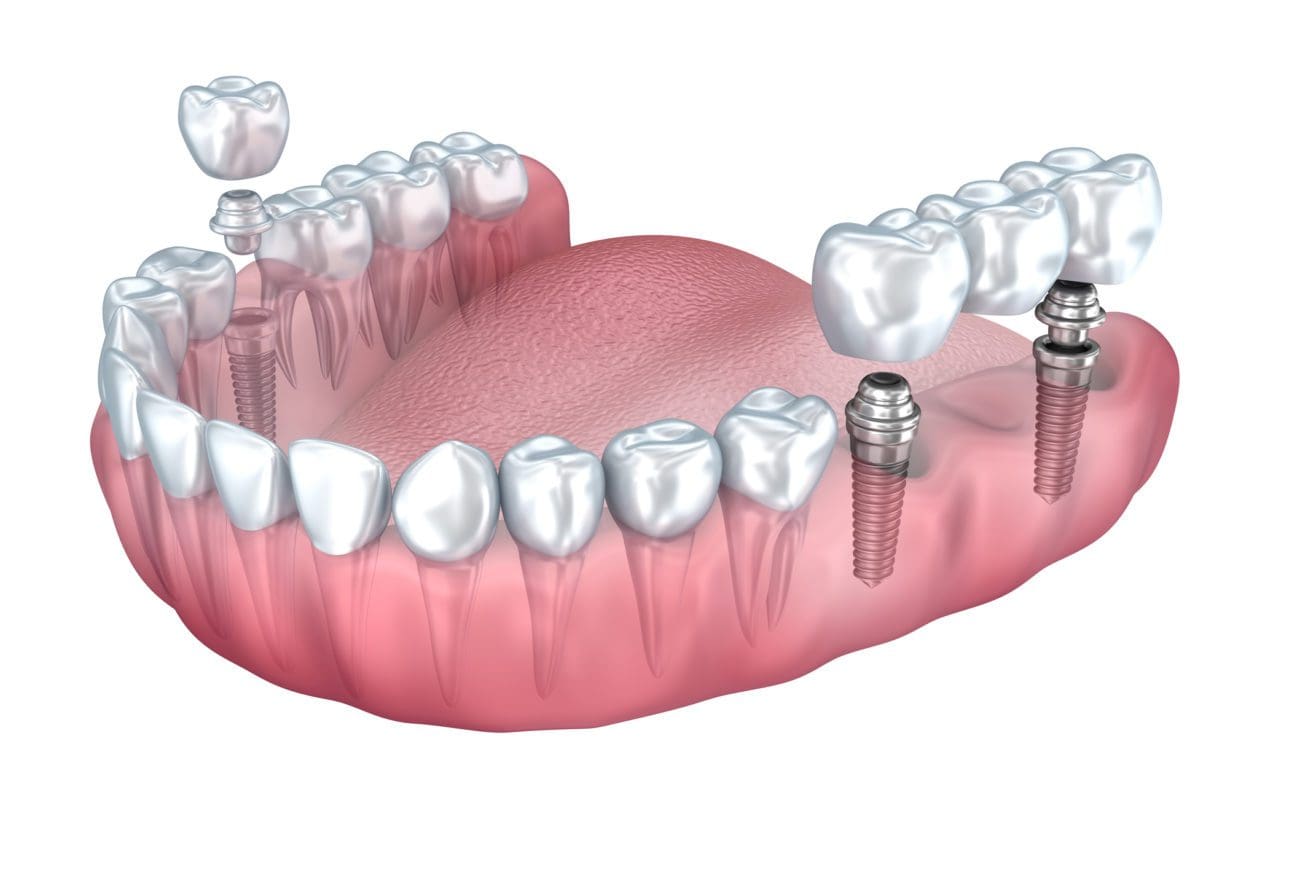Some Known Questions About Dental Sense.
Some Known Questions About Dental Sense.
Blog Article
A Biased View of Dental Sense
Table of ContentsExamine This Report on Dental SenseDental Sense Fundamentals ExplainedSome Of Dental Sense8 Easy Facts About Dental Sense Explained
are clinical gadgets operatively implanted into the jaw to recover an individual's ability to eat or their appearance. They give assistance for artificial (phony) teeth, such as crowns, bridges, or dentures. When a tooth is shed due to injury or illness, a person can experience complications such as fast bone loss, malfunctioning speech, or modifications to eating patterns that result in discomfort.Dental implant systems contain a dental implant body and oral implant joint and may also include an abutment addiction screw. Dental veneers cost. The dental implant body is operatively inserted in the jawbone in location of the tooth's root. The dental implant joint is usually affixed to the implant body by the abutment addiction screw and prolongs with gums right into the mouth to support the connected fabricated teeth
(https://telegra.ph/Transform-Your-Smile-Dental-Implants-Root-Canal-Procedures-and-Professional-Teeth-Whitening-01-11)Structure of The Oral Implant System picking oral implants, talk to your dental supplier regarding the possible benefits and threats, and whether you are a candidate for the procedure. Things to consider: Your total health is a vital consider establishing whether you are a good prospect for dental implants, exactly how long it will certainly require to heal, and how much time the implant may remain in location.
Cigarette smoking might impact the recovery process and lower the lasting success of the implant. The healing process for the implant body might take numerous months or longer, throughout which time you normally have a short-term joint instead of the tooth. the dental implant treatment: Thoroughly follow the dental hygiene guidelines offered to you by your oral company.
Dental Sense Things To Know Before You Buy
Implant failing can cause the demand for another operation to repair or change the implant system. Restores the ability to chew Restores aesthetic look Assists keep the jawbone from shrinking as a result of bone loss Maintains the health of the surrounding bone and gums Assists maintain surrounding (close-by) teeth stable Boosts high quality of life Damages to bordering natural teeth throughout implant positioning Injury to the surrounding tissues during surgical treatment, such as sinus opening Injury during surgery (for example, fracture of surrounding jawbone) Inadequate function, such as seeming like the teeth do not bite with each other generally A sensation that the tooth hangs or turning in position resulting from a joint screw loosening Implant body failure (looseness of the implant body) due to systemic infection, which might be more likely in individuals with unrestrained diabetes due to local infection in bone and gums sustaining the dental implant body because of delayed recovery, which may be much more likely in patients that smoke Difficulty cleaning the gums around the dental implant, causing poor dental health Without treatment periodontal condition Post-surgical tingling as a result of nerve impingement or damages Constantly alert healthcare service providers and imaging technicians that you have dental implants prior to any kind of magnetic resonance imaging (MRI) or x-ray treatments.
FDA is not conscious of any damaging occasions reported for MRI or x-ray treatments with dental implants. Dental implants systems are typically made from materials that follow international consensus criteria of the International Company for Standardization (ISO) or ASTM International. These standards have information of what makes a safe material.

A dental implant is a framework that changes a missing tooth. check here With screw-like tools, the surgeon inserts a dental implant right into the jawbone, and it serves as a support for a fabricated tooth, called a crown. A tool called an abutment connects the artificial tooth to the oral implant. The crown is tailor-made to fit the person's mouth and match the shade of their teeth.
See This Report on Dental Sense
Some individuals are not eligible for oral implant surgical procedure. It is for oral surgeons to operate people with: intense illnessuncontrollable metabolic diseasebone or soft cells disease or infectionIf these problems are solved, an individual can have the surgical treatment. In, dental doctors refrain from running on individuals with: If people with any one of the above go through oral implant surgical treatment, there is a higher danger of the implant falling short.

Dental implant surgical procedure is a tailored process. Offer you time to heal. Attach the message and last crown, bridge or denture.
Next, your doctor will very carefully place the oral implant into your jaw. Lastly, your surgeon will certainly rearrange your gums and shut the laceration with stitches. If your implant is near the front of your mouth, your dental professional will make a short-lived tooth for you to put on up until you heal. By doing this, you won't have a void in your smile while you recover.
Indicators on Dental Sense You Should Know
Your provider can inform you what to anticipate in your situation. Throughout the healing phase, your jawbone must fuse to the dental implant. This process, called osseointegration, is critical for stability and long-lasting success. This procedure can take anywhere from 3 to nine months. In many cases, it might take longer.
When your implant heals, your dentist can attach the abutment (little adapter article) and your final remediation (crown, bridge or denture). This typically takes concerning one hour to complete and may require a second minor surgery. You should not feel any pain throughout your oral implant treatment due to the fact that your company will certainly make use of drug to numb your periodontals.
Report this page